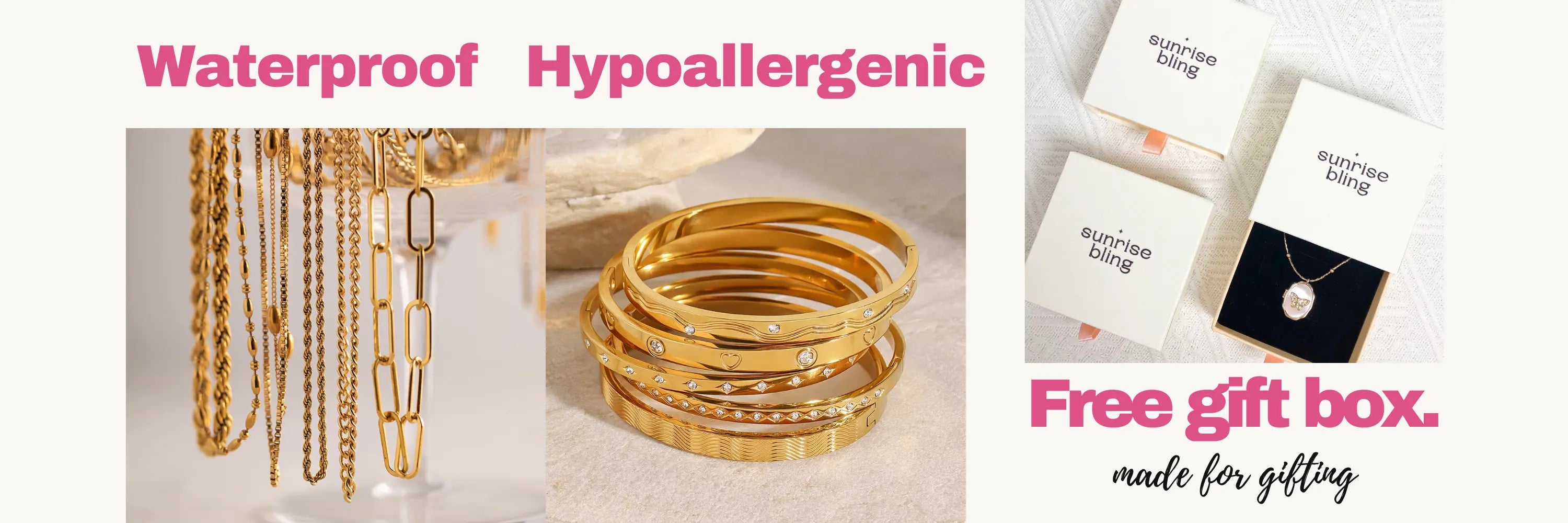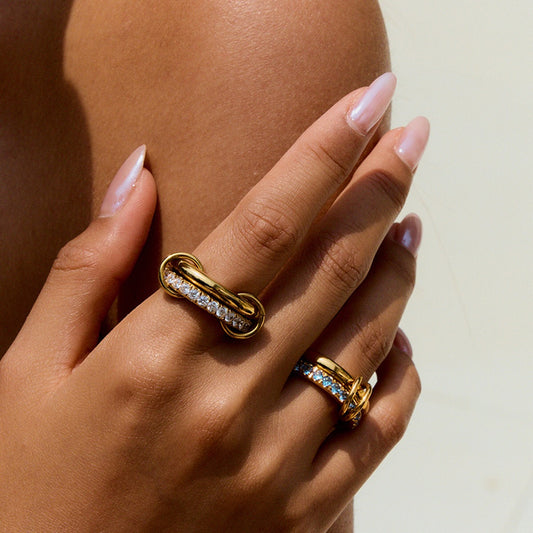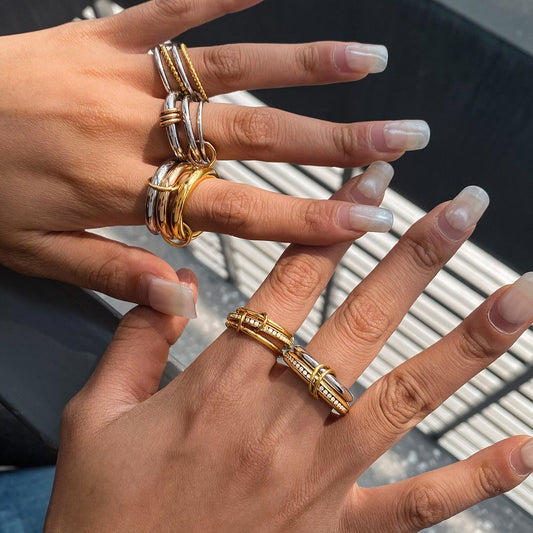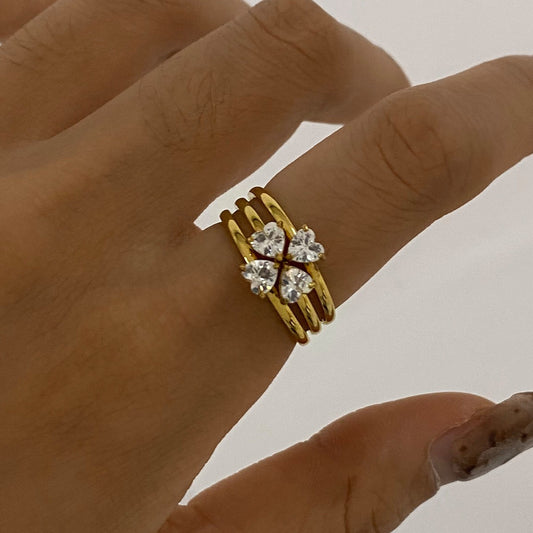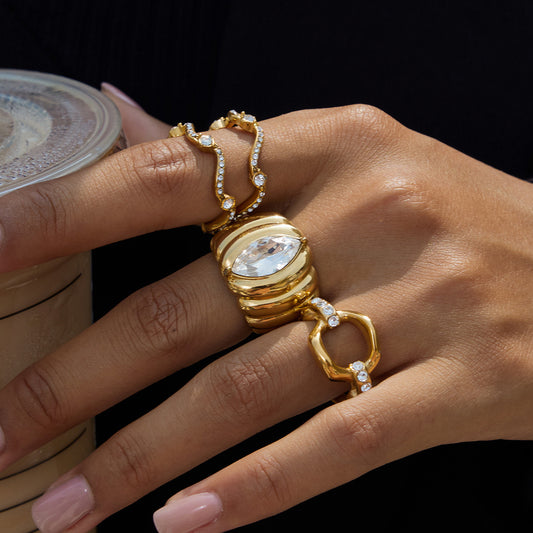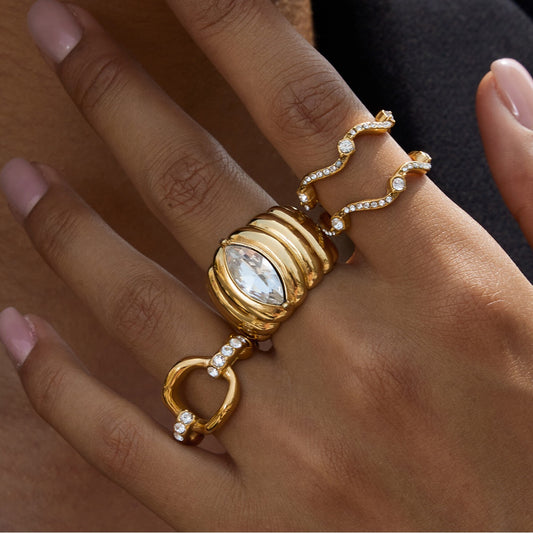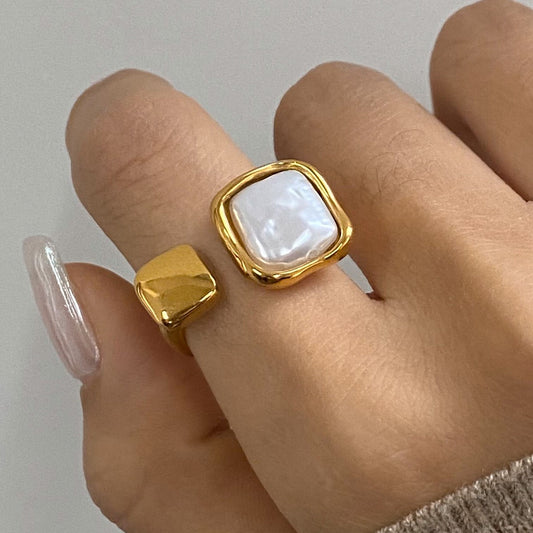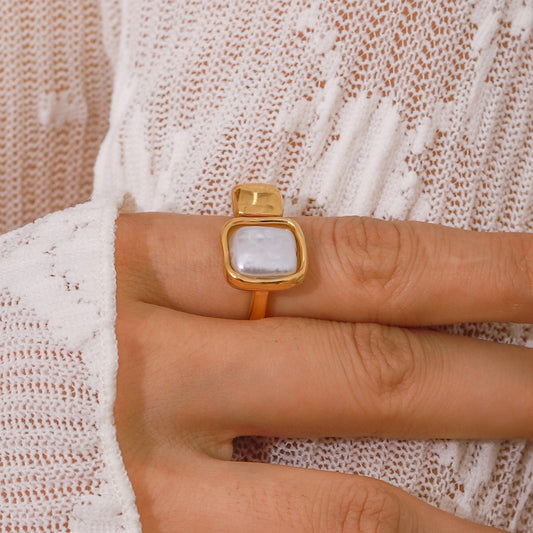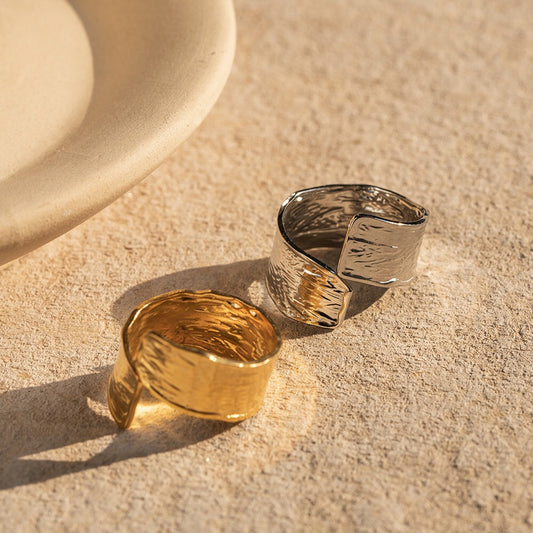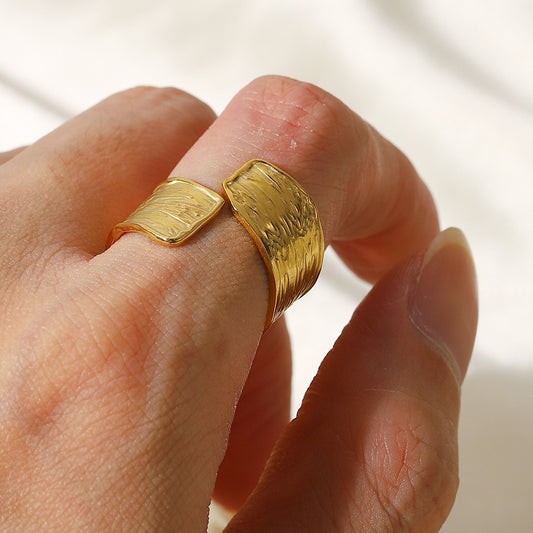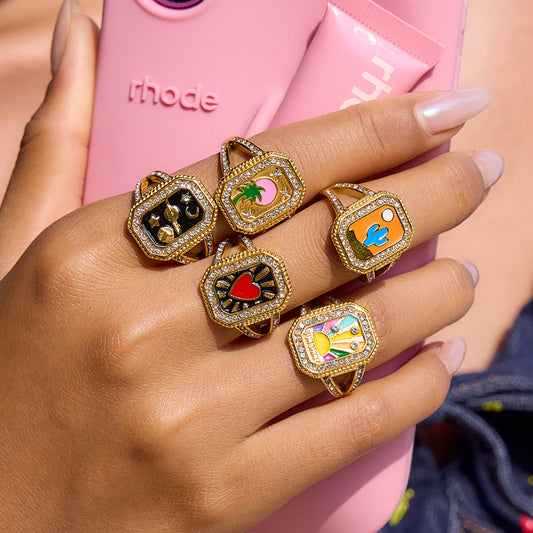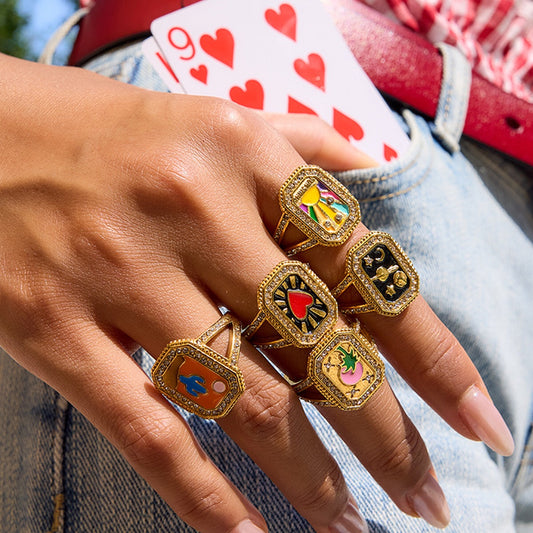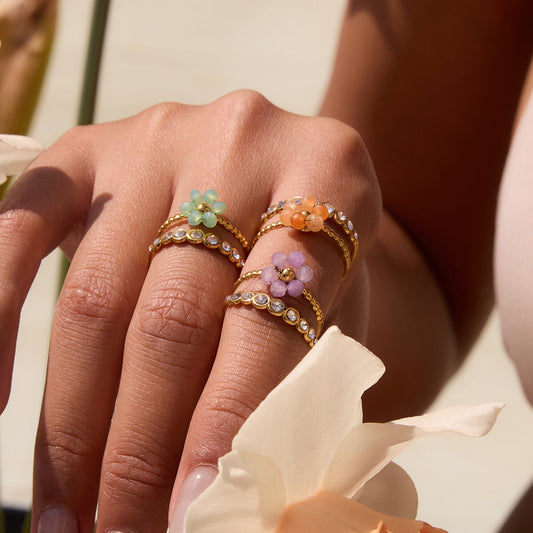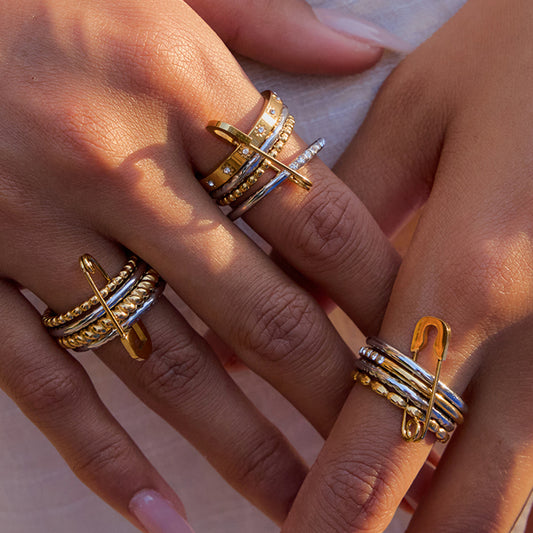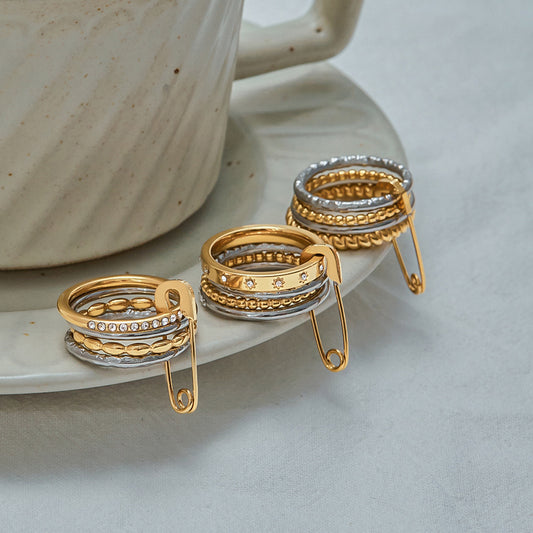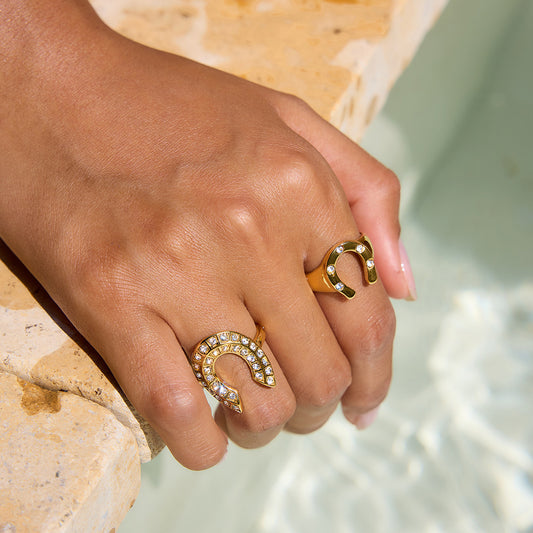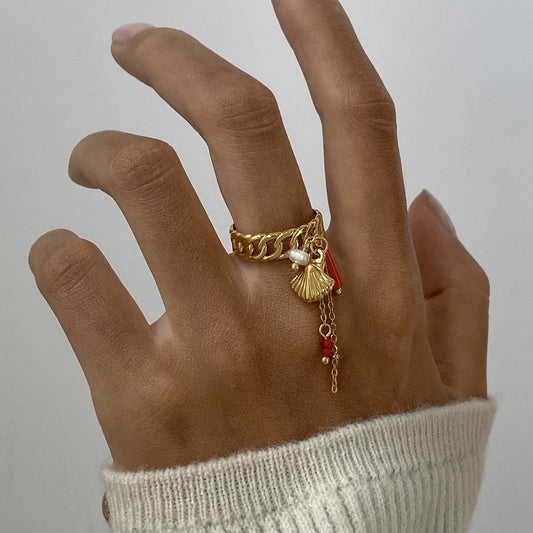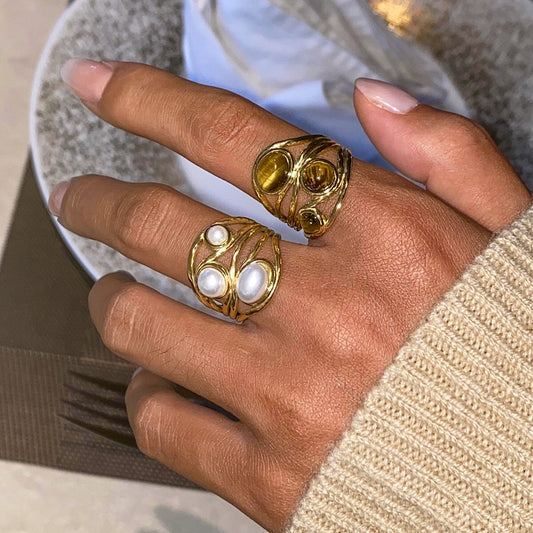How do I know my ring size? It’s a question millions of people ask each year—especially when shopping for engagement rings, wedding bands, or thoughtful gifts. The global jewelry market size reached USD 365.9 Billion in 2024 and expected to reach USD 580.7 Billion by 2033, at a CAGR of 5%.. This frustration is avoidable: knowing your ring size (or someone else’s) only takes a few minutes with the right tools or tricks. Whether you’re buying a ring for yourself, your wife, or your girlfriend, getting the size right ensures a “perfect fit” that’s comfortable to wear and avoids the hassle of returns. In this article, we’ll break down exactly how to find your ring size, explain what ring sizes mean, and cover everything else you need to know about choosing, wearing, and caring for rings.
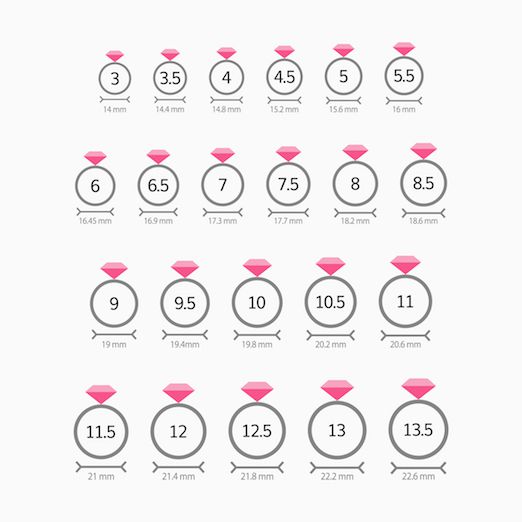
How Do I Know My Ring Size?
Method 1: Use a Ring Sizer Tool (Most Accurate)
A ring sizer is a simple, affordable tool designed specifically to measure ring size—and it’s the most reliable way to get an accurate fit.
-
What You Need: A plastic or metal ring sizer (available for \(5–\)15 online at Amazon, Walmart, or jewelry stores like Kay Jewelers) or a printable ring sizer (free downloads from Blue Nile, James Allen, or Zales).
-
Step-by-Step Process:
-
For a physical sizer: Slide the adjustable band onto the finger you plan to wear the ring on (usually the ring finger of your dominant hand). Adjust the sizer until it fits snugly—you should be able to slide it on and off with slight resistance (too loose = inaccurate size, too tight = uncomfortable).
-
For a printable sizer: Print the template (make sure “scale to fit” is disabled in your printer settings—use a ruler to confirm the “1 inch” mark on the template is accurate). Cut out the sizer, wrap the paper strip around your finger, and mark where the end overlaps. Match the mark to the size chart on the template.
-
Pro Tip: Measure your finger at the end of the day—fingers swell slightly in the morning or after exercise, which can lead to a larger, less accurate size.

Method 2: Measure an Existing Ring (No Tools Needed)
If you already own a ring that fits the same finger, you can use it to find your size—great for quick checks.
-
What You Need: A ruler (metric or imperial) and a piece of paper (optional).
-
Step-by-Step Process:
-
Place the existing ring on a flat surface (e.g., a table).
-
Use the ruler to measure the inside diameter of the ring (the distance across the center of the ring, from one inner edge to the other).
-
Match the diameter to a standard ring size chart:
-
US Size 6: 16.5mm diameter
-
US Size 7: 17.3mm diameter
-
US Size 8: 18.1mm diameter
-
US Size 9: 18.9mm diameter
-
If you don’t have a chart, use this formula: Multiply the diameter by 3.14 (pi) to get the circumference, then refer to a circumference-based size chart.
-
Pro Tip: Avoid measuring wide rings (over 6mm) with this method—wide bands fit tighter, so their diameter may not match narrow rings of the same size.
Method 3: DIY String or Paper Method (Emergency Hack)
If you don’t have a sizer or existing ring, you can use string or paper to measure your finger—this is a temporary fix, but it works in a pinch.
-
What You Need: A piece of string (thin, non-stretchy) or paper, a pen, and a ruler.
-
Step-by-Step Process:
-
Wrap the string/paper around the base of your finger (where the ring will sit). Make sure it’s snug but not tight—you should be able to fit one finger between the string and your skin.
-
Mark where the string/paper overlaps with a pen.
-
Unwrap the string/paper and measure the length from the start to the mark (this is your finger’s circumference).
-
Match the circumference to a US ring size chart:
-
US Size 6: 52mm circumference
-
US Size 7: 54.5mm circumference
-
US Size 8: 57mm circumference
-
US Size 9: 59.5mm circumference
-
Pro Tip: Use dental floss if you don’t have string—it’s non-stretchy and thin, making it more accurate than yarn or thick string.

Method 4: Visit a Jeweler (Guaranteed Accuracy)
For the most precise measurement (especially for expensive rings like engagement bands), visit a local jeweler—most offer free ring sizing.
-
What to Expect: The jeweler will use a metal ring sizer set (a series of small metal rings in different sizes) to find your perfect fit. They’ll slide different sizes onto your finger, adjusting until they find one that’s snug but comfortable.
-
Why It’s Worth It: Jewelers account for factors like finger shape (some fingers are wider at the base) and ring width (wide bands need a half-size larger than narrow ones). This is the best option if you’re buying a ring for a special occasion (e.g., a wedding).
What is Ring Size
Definition and Global Sizing Systems
Ring size is a standardized measurement that determines how well a ring fits on a finger, based on the finger’s circumference or diameter. Different countries use different sizing systems—here are the most common:
-
US/Canadian System: Uses numerical sizes (5–13 for women, 8–16 for men), with half-sizes (e.g., 6.5, 7.5) for a more precise fit. Sizes increase by 0.8mm in circumference per full size.
-
European System: Uses millimeters (mm) based on the finger’s circumference (e.g., a 52mm circumference = EU Size 52, which is equivalent to US Size 6).
-
UK/Australian System: Uses alphabetical sizes (A–Z, with half-sizes), where UK Size L = US Size 6, UK Size N = US Size 7.
-
Asian System: Similar to the European system but uses smaller numerical sizes (e.g., Chinese Size 12 = US Size 6).
Key Terms to Understand
-
Circumference: The distance around your finger (the most common measurement for ring sizing). This is what DIY methods (string, paper) and jewelers measure.
-
Diameter: The distance across the inside of a ring (used to measure existing rings). Multiplying the diameter by pi (3.14) gives the circumference.
-
Wide Band Adjustment: Rings wider than 6mm (e.g., wedding bands, statement rings) fit tighter than narrow rings. You’ll need to size up by half a size (e.g., if you wear a US Size 7 in a narrow ring, you’ll need a US Size 7.5 in a wide band).

Why Ring Size Varies by Finger
Your ring size isn’t the same for every finger—here’s why:
-
Dominant Hand: The fingers on your dominant hand (right hand if you’re right-handed) are usually 0.5 sizes larger than your non-dominant hand. For example, if your left ring finger is a US Size 6, your right ring finger may be a US Size 6.5.
-
Finger Position: Fingers get smaller as you move from your thumb to your pinky. Your thumb is typically 2–3 sizes larger than your pinky (e.g., thumb = US Size 9, pinky = US Size 6).
-
Temperature and Swelling: Fingers swell in hot weather, after exercise, or when you’re dehydrated—this can increase your ring size by 0.5–1 size temporarily. They shrink in cold weather, so always measure at a normal temperature.
Why is Ring so popular
Symbolism and Emotional Value
Rings are popular because they carry deep symbolic meaning—they’re not just accessories, but tangible representations of love, commitment, and milestones:
-
Engagement/Wedding Rings: Symbolize lifelong commitment—over 80% of couples in the US exchange engagement rings, according to the JA. A wedding band is a daily reminder of marriage vows.
-
Family Rings: Heirloom rings (e.g., a grandmother’s wedding band) pass down family history, connecting generations.
-
Achievement Rings: Class rings, championship rings, or graduation rings celebrate personal or professional success.
This emotional weight makes rings more meaningful than other jewelry (e.g., necklaces, earrings) that often lack such strong symbolism.

Versatility for Every Occasion
Rings work for every event and style—you can wear them daily or save them for special moments:
-
Everyday Casual: A simple silver band or minimalist ring pairs with jeans and a tee—adds subtle personality without effort.
-
Work/Professional: A sleek gold ring or small gemstone ring complements a blazer and tailored pants—polished but not distracting.
-
Formal Events: A statement ring (e.g., a diamond solitaire or sapphire band) elevates a gown or cocktail dress—adds glamour without overshadowing the outfit.
This versatility means you can build a ring collection that fits every part of your life.
Affordability and Accessibility
Rings are available at every price point, making them accessible to everyone:
-
Budget-Friendly: \(10–\)50 for stainless steel or sterling silver bands (perfect for everyday wear or gifts).
-
Mid-Range: \(50–\)500 for gold-plated rings, birthstone rings, or simple gemstone designs.
-
Luxury: \(500+ for 14k gold, diamond, or designer rings (ideal for engagement or milestone gifts). You don’t need to spend a fortune to own a meaningful ring—even a \)20 stainless steel band can hold sentimental value.
Trendy and Timeless Designs
Rings balance trendy and timeless styles, so there’s something for every taste:
-
Timeless Styles: Solitaire rings, plain gold bands, and signet rings have been popular for decades and never go out of fashion—they’re investments that last.
-
Trendy Styles: Stackable rings, midi rings (worn above the knuckle), and minimalist geometric rings are currently on-trend, appealing to younger shoppers.
This mix of classic and modern designs keeps rings popular year after year.
Popular styles of Ring
Solitaire Rings
A classic style featuring a single gemstone (usually a diamond, sapphire, or ruby) set in a simple metal band.
-
Design: The gemstone is held in place by prongs (4–6 prongs) to maximize sparkle. The band is thin (2–3mm) to keep the focus on the gem.
-
Why It’s Popular: Timeless and elegant—perfect for engagement rings or as a “forever” piece. The single gemstone adds glamour without being overly flashy.
-
Best For: Formal events, engagement, or anyone who loves understated luxury.
Stackable Rings
A set of thin, simple rings designed to be worn together on the same finger.
-
Design: Each ring is 1–2mm thick and can be plain metal, engraved, or have tiny gemstones. They’re sold individually or in sets of 2–5.
-
Why It’s Popular: Customizable—you can mix metals (gold + silver), add engravings, or layer different textures (smooth + hammered) to create a unique look. They’re also affordable, so you can build your stack over time.
-
Best For: Everyday wear, casual outfits, or anyone who loves trendy, personalized jewelry.
Signet Rings
A ring with a flat, raised surface (the “signet”) that’s engraved with initials, a family crest, or a symbol.
-
Design: Traditionally made of gold or silver, with a thick band (3–4mm) for durability. The signet can be round, square, or oval.
-
Why It’s Popular: Rich in history—signet rings were once used to seal letters, but now they’re a stylish way to show personal identity. They’re unisex, making them great for men and women.
-
Best For: Workwear, family heirlooms, or anyone who loves vintage-inspired jewelry.
Band Rings
A simple, solid ring with no gemstones—focused on the metal and texture.
-
Design: Available in different widths (2–6mm) and textures (smooth, hammered, twisted, or engraved). Common metals include gold, silver, platinum, and stainless steel.
-
Why It’s Popular: Versatile and durable—perfect for daily wear. Hammered or twisted textures add visual interest without gemstones, making them great for minimalists.
-
Best For: Wedding bands, everyday casual wear, or anyone who prefers simple, low-maintenance jewelry.
Gemstone Rings
A ring featuring one or more colored gemstones (e.g., emerald, ruby, birthstone) set in a metal band.
-
Design: Gemstones can be set in prongs, bezels, or pavé (small gemstones closely spaced). The band may be plain or have diamond accents.
-
Why It’s Popular: Adds color and personality—birthstone rings are a popular gift, as they’re personalized to the wearer’s birthday. Colored gemstones are also more affordable than diamonds, making them accessible.
-
Best For: Birthdays, gifts for loved ones, or anyone who loves colorful jewelry.
How to wear Ring
Pairing with Outfits (By Occasion)
-
Everyday Casual:
-
Outfit: High-waisted blue jeans, a white graphic tee, and white sneakers.
-
Ring: A stack of 2–3 thin silver stackable rings on your index finger, plus a simple gold band on your ring finger. The mix of metals adds a trendy, laid-back vibe.
-
Work/Professional:
-
Outfit: A navy blazer, a light blue button-down shirt, and tailored black trousers.
-
Ring: A single gold signet ring (engraved with your initials) on your pinky finger, or a small diamond solitaire ring on your ring finger. The understated design is office-appropriate and polished.
-
Date Night:
-
Outfit: A black slip dress, strappy gold heels, and a small clutch.
-
Ring: A bold gemstone ring (e.g., a red ruby or blue sapphire) on your middle finger. The color pops against the black dress, adding romance and glamour.
-
Formal Event (Wedding/Gala):
-
Outfit: A floor-length silver sequined gown or a black velvet dress.
-
Ring: A diamond cocktail ring (large center stone with small accents) on your ring finger. The sparkle complements the sequins or velvet, making you stand out at the event.
Styling Tips for Different Hand Shapes
Rings can flatter every hand shape—use these tips to choose the right style:
-
Small Hands (Petite Fingers): Opt for thin bands (1–2mm) and small gemstones. Avoid wide bands or large statement rings—they’ll overwhelm your fingers. Stackable rings or delicate solitaire rings work best.
-
Large Hands (Long Fingers): Go for bold styles—wide bands (4–6mm), large gemstones, or statement rings. A single wide band on your ring finger balances long fingers, while stackable rings can add depth without looking too small.
-
Square Hands (Sharp Knuckles): Choose rounded or curved rings (e.g., oval gemstones, twisted bands) to soften sharp angles. Avoid square-shaped rings or angular designs—they’ll emphasize squareness.
-
Round Hands (Short Fingers): Wear vertical or elongating styles—marquise or emerald-cut gemstones, or thin bands with a single vertical accent. These make fingers look longer and more slender.
Layering Rings (Stacking Tips)
Layering rings is a trendy way to add personality—follow these rules to avoid clutter:
-
Mix Metals (Carefully): Pair gold and silver rings for a modern look, but stick to 2 metals max. For example, a gold band + a silver stackable ring + a gold signet ring creates balance.
-
Balance Sizes: If you’re wearing a wide band (4mm) on your ring finger, pair it with 1–2 thin rings (1mm) on the same finger. Too many wide bands will feel bulky and uncomfortable.
-
Spread Them Out: Don’t stack all rings on one finger—spread them across 2–3 fingers (e.g., index, middle, ring) for a cohesive look. For example, a stack on your index finger, a single band on your middle finger, and a solitaire on your ring finger.
-
Consider Occasion: For casual wear, stack 3–4 thin rings; for formal events, stick to 1–2 rings per hand to keep the look elegant.
Ring: perfect gift for your wife
Symbolizes Love and Commitment
A ring is a perfect gift for your wife because it’s a tangible symbol of your love and commitment—more than a necklace or earrings, a ring is worn daily, serving as a constant reminder of your marriage and the moments you’ve shared. Whether it’s an anniversary band, a birthstone ring, or a custom-engraved design, every time she glances at it, she’ll be reminded of your love. Unlike a bouquet of flowers that fades or a piece of clothing that goes out of style, a ring lasts for years—symbolizing the longevity of your marriage.
Fits Her Unique Style (Thoughtful Personalization)
Every wife has her own jewelry taste, and a ring can be tailored to match it—showing you pay attention to the little details she loves:
-
Minimalist Wife: A thin gold or silver band (2mm) with a tiny engraved detail (e.g., your wedding date or her initials). Simple enough for daily wear, but meaningful enough to feel special.
-
Glamorous Wife: A diamond solitaire ring or a sapphire cocktail ring with diamond accents. Sparkly enough for date nights or family events, and elegant enough to complement her formal outfits.
-
Sentimental Wife: A family heirloom ring (e.g., passing down your mother’s wedding band) or a custom ring with her children’s birthstones. It honors her role as a mother and connects her to the family.
-
Trendy Wife: A set of stackable rings in mixed metals (gold + silver) or a midi ring (worn above the knuckle). Perfect for her on-trend style, and she can mix and match with her existing jewelry.
Celebrates Milestones (Memorable Moments)
A ring is the ideal gift for marriage milestones, turning ordinary days into unforgettable ones:
-
Anniversary: The 10th anniversary is “tin/aluminum,” but a silver or gold ring is a more meaningful upgrade. For the 25th (silver) or 50th (gold) anniversary, a ring in the corresponding metal is a traditional, heartfelt choice.
-
Birthday (Milestones like 40th/50th): A gemstone ring featuring her birthstone or a favorite color. For example, if she loves blue, a blue topaz or sapphire ring adds a personal touch.
-
Empty Nest/Retirement: A travel-themed ring (e.g., a band with tiny map engravings) to celebrate her new chapter of adventures. It’s a reminder of the fun times you’ll share together.
Comfortable for Daily Wear (Practicality Meets Style)
Wives are busy—running errands, working, caring for the family—and a ring needs to be comfortable enough to wear every day. Unlike a bulky necklace or heavy earrings that can feel restrictive, a well-fitted ring (thanks to knowing her size!) is lightweight and doesn’t get in the way. Choose a low-profile design (e.g., a bezel-set gemstone or a smooth band) to avoid snagging on clothing or dishes, and she’ll reach for it again and again.
How to clean Ring
Supplies Needed (Gentle and Effective for All Metals/Gemstones)
Different ring materials require different cleaning methods, but these basic supplies work for most rings (gold, silver, stainless steel, and common gemstones like diamonds or sapphires):
-
Mild dish soap (unscented, dye-free—avoid bleach or ammonia).
-
Lukewarm water (not hot—heat can damage gemstones or loosen settings).
-
Soft-bristled toothbrush (unused, extra-soft—hard bristles scratch metal or gemstone surfaces).
-
Lint-free cloth (microfiber or cotton—avoid paper towels, which leave scratches).
-
Metal-specific cleaners (optional): Silver polish for sterling silver, gold polish for 14k/18k gold, or diamond cleaner for gemstone rings.
Step-by-Step Cleaning Process (By Material)
1. Gold and Platinum Rings (14k/18k/Platinum)
-
Mix 1 drop of mild dish soap with 1 cup of lukewarm water.
-
Soak the ring for 10–15 minutes to loosen dirt, oil, and lotion buildup.
-
Use the soft toothbrush to gently scrub the band and settings—focus on crevices where dirt hides (e.g., under prongs or around gemstones).
-
Rinse thoroughly under lukewarm water, then pat dry with a lint-free cloth.
-
For extra shine, buff with a gold or platinum polishing cloth (avoid using on gemstones—stick to the metal band).
2. Sterling Silver Rings (Prone to Tarnish)
-
Make a paste of 1 part baking soda and 1 part water.
-
Apply a small amount of paste to the silver band with a soft cloth, gently rubbing in circular motions to remove tarnish (avoid gemstones—tarnish removers can damage them).
-
Rinse the ring with lukewarm water to remove paste residue.
-
Dry with a lint-free cloth, then polish with a silver polishing cloth to restore shine.
3. Stainless Steel Rings (Durable but Needs Regular Cleaning)
-
Mix 1 drop of dish soap with 1 cup of water.
-
Wipe the ring with a damp soft cloth to remove surface dirt.
-
For tough stains (e.g., makeup or lotion), use a soft toothbrush to scrub gently.
-
Rinse and dry immediately—stainless steel can develop water spots if left wet.
4. Gemstone Rings (Diamonds, Sapphires, Rubies)
-
Soak the ring in a mixture of dish soap and lukewarm water for 5–10 minutes.
-
Use a soft toothbrush to clean around the gemstone (avoid scrubbing the gem directly—some soft gemstones like emeralds can scratch).
-
Rinse thoroughly, then dry with a cloth. For diamonds, use a diamond cleaner spray (available at jewelry stores) for extra sparkle—just follow the product instructions.
Maintenance Tips to Keep Rings Looking New
-
Store Properly: Keep rings in a soft jewelry pouch or a lined jewelry box (separate from other jewelry) to avoid scratches. For silver rings, add a silica gel packet to absorb moisture (prevents tarnish).
-
Remove Before Activities: Take off rings before swimming (chlorine damages metals and gemstones), gardening (dirt scratches surfaces), cooking (oils build up in settings), or applying beauty products (perfume, lotion, hairspray can dull metals).
-
Clean Regularly: Wipe rings with a dry cloth after daily wear to remove skin oils. Deep clean gold, platinum, and stainless steel rings weekly; silver rings every 3–4 days (to prevent tarnish).
-
Check Settings: Every 3–6 months, inspect prongs and gemstones—if prongs are bent or a gemstone feels loose, take the ring to a jeweler immediately.
How do i know what ring size my girlfriend is
Figuring out your girlfriend’s ring size without her noticing (e.g., for a surprise proposal or birthday gift) takes a little creativity—but it’s totally doable. Here are 4 foolproof methods:
Method 1: Borrow an Existing Ring (Most Accurate)
If your girlfriend owns a ring that fits the finger you plan to buy for (usually the ring finger of her left hand), borrow it temporarily to measure.
-
How to Do It:
-
Sneak the ring when she’s not looking (e.g., while she’s sleeping or in the shower).
-
Use the “measure an existing ring” method from earlier: Place it on a flat surface, measure the inside diameter with a ruler, and match it to a size chart.
-
Return the ring immediately—don’t let her notice it’s missing!
-
Pro Tip: If the ring is a wide band (over 6mm), size up by half a size when buying a new ring—wide bands fit tighter than narrow ones.
Method 2: Ask a Trusted Friend or Family Member
Her best friend, sister, or mother likely knows her ring size (or can help you find it without raising suspicion).
-
How to Do It:
-
Reach out to the friend/family member privately—explain you’re planning a surprise gift and need her size.
-
Ask them to casually bring up ring sizes in a conversation (e.g., “I need to get my ring resized—what’s your size?”) or borrow one of her rings to measure.
-
Pro Tip: Choose someone who’s good at keeping secrets—you don’t want the surprise ruined!
Method 3: Use the “String/Paper” Hack While She’s Asleep
If you share a bed, measure her finger while she’s sleeping (gently—you don’t want to wake her!).
-
What You Need: A thin string or dental floss, a pen, and a ruler.
-
How to Do It:
-
Gently wrap the string around the base of her ring finger (left hand). Make sure it’s snug but not tight—you should be able to slide one finger between the string and her skin.
-
Mark the string with a pen where it overlaps.
-
Unwrap the string carefully and measure the length (circumference) with a ruler.
-
Match the circumference to a US ring size chart (e.g., 54.5mm = US Size 7).
-
Pro Tip: Practice on your own finger first to get the hang of it—you don’t want to fumble and wake her up.
Method 4: Casually Bring Up Ring Sizes (Subtle Conversation)
If you’re comfortable dropping a hint (without giving away the surprise), bring up ring sizes in a casual chat.
-
How to Do It:
-
Talk about jewelry you’ve seen (e.g., “I saw a cool ring at the mall today—do you know your ring size?”) or mention a friend’s recent engagement (e.g., “Our friend just got engaged—she said she had to get her ring resized. What’s your size?”).
-
If she doesn’t know, suggest measuring her finger together for fun (e.g., “Let’s measure it with string—curious what size you are!”).
-
Pro Tip: Keep the tone light—don’t pressure her or make it obvious you’re planning a gift.
Frequently asked questions about Ring
Can my ring size change over time?
Yes—your ring size can change due to several factors:
-
Weight Fluctuations: Gaining weight can make fingers swell (increasing your size by 0.5–1), while losing weight can make fingers shrink (decreasing size by 0.5–1).
-
Age: As you get older, skin loses elasticity, and fingers may become slightly larger or smaller.
-
Health Conditions: Pregnancy, thyroid issues, or arthritis can cause temporary or permanent finger swelling (increasing size).
-
Temperature/Activity: Fingers swell in hot weather or after exercise (temporary size increase) and shrink in cold weather (temporary size decrease).
If your ring feels too tight or loose, get it resized by a jeweler—most offer resizing for \(20–\)50 (depending on the metal and band width).
Is it better to size up or down if I’m between sizes?
If you’re between two sizes (e.g., your measurement is halfway between US Size 7 and 7.5), follow these rules:
-
For Narrow Bands (Under 6mm): Size up to the larger size. Narrow bands fit tighter over time, so a slightly larger size will be more comfortable.
-
For Wide Bands (Over 6mm): Size up to the larger size. Wide bands already fit tighter, so sizing up prevents discomfort.
-
For Rings with Gemstones: Size up—prongs and settings can add slight bulk, so a larger size ensures the ring slides on easily.
When in doubt, visit a jeweler—they can help you choose the best size based on the ring’s design.
Can all rings be resized?
Most rings can be resized, but some designs are harder to adjust:
-
Resizable Rings: Plain metal bands (gold, silver, stainless steel), solitaire rings with simple prongs, and stackable rings. These can be sized up or down by 1–2 sizes.
-
Hard to Resize: Rings with gemstones set all the way around (e.g., eternity bands), rings with intricate engravings, or rings made of hard metals like titanium. Resizing these can damage gemstones or ruin the design—jewelers may recommend a new ring instead.
-
Not Resizable: Rings made of ceramic, tungsten, or plastic—these materials are brittle and can crack when resized.
Always ask a jeweler if a ring can be resized before buying, especially if you think your size may change.
How tight should a ring fit?
A well-fitted ring should be snug but not tight—here’s how to tell:
-
Slide On/Off: You should be able to slide the ring on and off with slight resistance (not too easy, not too hard). If it slips off easily, it’s too loose (risk of losing it). If you have to force it on, it’s too tight (can cut off circulation).
-
Comfort: You shouldn’t feel a “pinching” sensation or numbness in your finger. The ring should stay in place when you move your hand (no spinning or sliding down to your knuckle).
-
Weather Considerations: If you measure in cold weather, the ring may feel slightly loose in hot weather (due to swelling)—this is normal. Aim for a fit that’s comfortable in mild temperatures.
Are ring sizes the same for men and women?
No—men’s ring sizes are typically larger than women’s:
-
Women’s Sizes: US Size 5–13 (most common: 6–8).
-
Men’s Sizes: US Size 8–16 (most common: 9–11).
However, there’s overlap—some women have larger fingers (size 9+) and some men have smaller fingers (size 8–9). The sizing system is the same (based on circumference), but the typical range differs. Always measure individually, regardless of gender.
Conclusion: How Do I Know My Ring Size? Simple Steps for Perfect Fit
Knowing your ring size (or someone else’s) is the first step to getting a “perfect fit”—and it’s easier than you think. Whether you use a ring sizer tool, measure an existing ring, or visit a jeweler, taking a few minutes to get the size right avoids the frustration of returns and ensures the ring is comfortable to wear daily. From choosing a style that matches your taste (solitaire, stackable, gemstone) to caring for it with regular cleaning, rings are more than just accessories—they’re symbols of love, commitment, and milestones.
If you’re shopping for a gift (for your wife, girlfriend, or even yourself), remember: the best ring is one that fits perfectly and reflects the wearer’s style. Use our methods to find the right size, and don’t hesitate to ask a jeweler for help if you’re unsure.
Ready to find your perfect ring? Explore our curated collection of rings for every style and budget—from minimalist bands to sparkling gemstone designs. All our rings come with a free ring sizer tool (with purchase) and a 30-day return policy (in case you need adjustments). Whether you’re buying for a special occasion or adding to your everyday collection, we’re here to help you get the perfect fit. Shop our ring collection today and wear your style with confidence!


